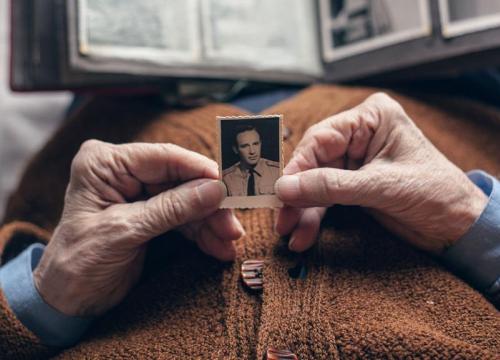Planning for End of Life

As difficult as it is to discuss, it is important for you and your loved one with PD to plan for and talk about end-of-life plans. Having your loved partake in these discussions can give them a sense of control in their life, even when it may feel like Parkinson’s has taken the control.
POLST
A portable medical order, known as POLST, is a national program for people who are seriously ill or have advanced frailty. If your loved one has advanced Parkinson’s and at least one of the following, POLST applies to them:
- Increased risk of experiencing a medical emergency based on their Parkinson’s, so they want to make their treatment preferences clear around CPR, mechanical ventilation, and ICU
- Multiple unplanned hospital admissions in the last 12 months, typically coupled with increasing frailty, decreasing function, and/or progressive weight loss
- Their doctor would not be surprised if they died within 1-2 years
The POLST form is used in addition to the healthcare power of attorney and is meant to assure your loved one and the family that healthcare professionals will provide only the treatments that the person wishes to receive.
The POLST form acts as standing medical orders and applies to all healthcare personnel (e.g., EMTs, emergency room personnel, etc.) and in all settings (homes, assisted living facilities, nursing homes, etc.). The form is completed after a careful discussion between the doctor, person with PD, care partner and any other relevant parties. The form has three sections:
- Cardiopulmonary resuscitation (CPR)
- Medical interventions
- Artificially administered nutrition
Most states have a POLST program established or in development and can use different names such as POST, MOLST, MOST.
Use of a Feeding Tube
Given the usual slow progression of PD, it is important to discuss your loved ones wishes when it comes to receiving artificial nutrition and hydration (ANH) through a feeding tube. A feeding tube can become an option if swallowing problems and/or severe dementia interfere with eating and drinking.
The person with Parkinson’s can choose one of three feeding tube options:
- No nutrition by tube
- Nutrition by tube only for a defined trial period
- Long-term artificial nutrition by tube
Without discussing this difficult topic, and if the person with Parkinson’s is unable to make his or her wishes known, then the healthcare power of attorney decides whether to place a feeding tube. If the decision is yours, consider the following:
- Is the goal to prevent pneumonia? If the use of a feeding tube is suggested because your loved one is at risk for aspirating or has had a bout of aspiration pneumonia, it is important to know that the feeding tube will not prevent infection.
- Are they experiencing severe dementia? Placing a feeding tube can worsen any agitation the person might have and may lead to the use of sedative medications. In a review of tube feeding for people with advanced dementia, the Cochrane Collaboration found no evidence that tube feeding improved quality of life.
- What will be most comfortable for them? Decision-makers sometimes worry that by not choosing to use a feeding tube they are dooming their loved one to a long and painful death. Reports from conscious dying patients indicate that thirst and appetite decrease naturally at the end of life. Conscious elderly patients slip quickly into a coma that is free of pain, while observation of unconscious patients indicates that the dying process is quite peaceful. If the body is shutting down in preparation for death, artificial hydration (the process of giving intravenous fluids) can cause distress. The body is unable to rid itself of excess fluids, which can build up in the lungs, making it hard to breathe.
Planning for the Death
Our beliefs and experiences shape us and play a large role when making end-of-life arrangements. Discussing advance preparations with your loved one is practical and necessary and can help you feel at ease as the care partner and/or spouse.

Legal, Financial & Insurance Planning
Empower yourself with the knowledge to help you plan for the future.
Know Their Wishes
Ask your loved one about their wishes as end of life approaches. They may request visits from family and friends, a clergy or other spiritual advisors.
Some people may wish to create messages or share photos, mementos or other special personal items with designated individuals. These gifts are usually appreciated and treasured by the recipients.
Discussing a Celebration of Life
Taking time to plan can reduce stress and empower you to know that you and your family are following your loved one’s wishes. Preplanning funeral arrangements can offer clarity in terms of costs and other details.
While it may seem tough to approach the topic of funeral and memorial services, your loved one may have strong opinions when it comes to type of service, music, readings, and location. Consider starting the conversation as a casual discussion or during a more formal family meeting.
Take notes of your loved ones choices and keep them in a secure location. A local funeral home representative will often help you make these arrangements.
Related Materials
My Parent Has Parkinson's. What Does It Mean?
Intimacy and PD
Impulse Control
Related Blog Posts

Care Partner Grief: 8 Ways to Care for Yourself During Bereavement

6 Questions for Exploring Your Parkinson’s-Related Grief
